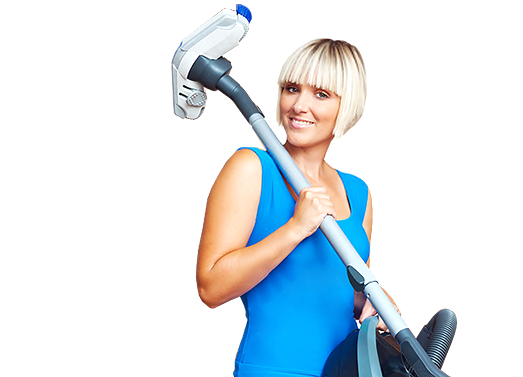Maintain a sanitised bathroom by preventing mold effectively
Posted on 27/08/2025
Maintain a Sanitised Bathroom by Preventing Mold Effectively
A clean, healthy bathroom is a must for every home. However, bathrooms are prone to humidity and dampness, creating a breeding ground for mold and mildew. Mold is not only unpleasant but can also adversely affect health and cause structural damage to your property. Learning how to keep your bathroom sanitized by preventing mold is essential for ensuring a safe, comfortable living environment.
Understanding Mold and Its Dangers
Mold is a type of fungi that thrives in moist environments. It can grow on walls, ceilings, tiles, and any surface that has consistent dampness. Bathrooms, with frequent use of water and poor ventilation, are particularly susceptible.
- Health Impact: Mold spores can trigger allergies, asthma, respiratory problems, and other health issues.
- Structural Damage: Persistent mold growth can weaken walls, ceilings, and even flooring over time.
- Unpleasant Odor: Mold emits a musty smell that negatively affects air quality.
Effectively preventing mold in your bathroom is critical to maintaining hygiene and your household's well-being. The earlier you take preventive steps, the easier it is to keep the area sanitized and mold-free.

Why Do Bathrooms Attract Mold?
Bathrooms inherently attract mold due to the frequent presence of moisture and humidity. Daily activities such as showering, bathing, and washing hands make the bathroom a hotspot for condensation and damp patches.
- Lack of ventilation accelerates moisture buildup.
- Poor cleaning habits allow mold to go unnoticed and thrive.
- Soap scum and organic residues on tile and grout provide "food" for mold colonies.
Understanding these conditions is the first step toward eliminating the risk and maintaining a sanitised bathroom by preventing mold.
How to Prevent Mold Effectively in your Bathroom
Smart prevention is the key to eliminating mold and keeping your bathroom spotless. Below are the most effective ways to prevent mold in your bathroom and maintain high sanitation standards.
Ensure Proper Ventilation
Good ventilation is the enemy of mold. A dry environment makes it hard for mold to grow.
- Install a high-quality bathroom exhaust fan and use it during and after every shower or bath for at least 15-20 minutes.
- If there is a window, open it briefly to allow moisture to escape and bring in fresh air.
- Leave the door slightly open to encourage airflow.
Tip: Clean your exhaust fan regularly to ensure optimal performance.
Control Moisture and Condensation
Mold cannot grow without moisture. Reduce moisture sources to effectively prevent mold in your bathroom.
- Use a squeegee to wipe down walls, glass doors, and tiles after each shower.
- Dry wet surfaces quickly--including countertops, sinks, and bathtubs.
- Fix leaky faucets, showerheads, or pipes as soon as possible.
- Do not leave damp towels, bathmats, or clothes on the floor. Hang them to dry or launder regularly.
Clean Surfaces Frequently
Regular cleaning doesn't give mold a chance to settle and spread.
- Disinfect tiles, shower curtains, and grout lines weekly with a mold-killing bathroom cleaner.
- Wipe down mirrors and windows to prevent moisture buildup.
- Pay attention to corners and crevices, which are hotspots for mold and mildew.
Did You Know? Homemade solutions (like vinegar or baking soda) can be effective for mild mold situations but aren't substitutes for commercial mold-removal products when infestations are severe.
Use Mold-Resistant Materials
Make your bathroom more resilient by using materials that naturally discourage mold growth.
- Install mold-resistant drywall or greenboard during bathroom renovations.
- Use mildew-resistant paint on walls and ceilings.
- Opt for ceramic or porcelain tiles, which are less porous than natural stone.
- Seal grout lines annually to keep moisture from seeping in.
Keep Humidity in Check
Controlling humidity is a central element of maintaining a sanitized, mold-free bathroom.
- Use a dehumidifier in homes with naturally high humidity levels.
- Keep indoor humidity below 50%. A simple digital hygrometer can help you monitor levels.
- Houseplants can help regulate moisture, but avoid overwatering them in bathroom spaces.
Check and Maintain Bathroom Fixtures
Broken or poorly installed fixtures and fittings can contribute to water leaks and promote mold growth.
- Inspect shower doors and windows for cracked seals. Reseal if necessary.
- Replace or repair faulty caulking around tubs, sinks, and toilets to prevent water seepage.
- Regularly check under sinks and behind toilets for hidden leaks.
Declutter Surfaces
*Cluttered bathroom countertops and shelves trap moisture and limit air circulation.*
- Keep only essential toiletries and products on surfaces.
- Store items in closed cabinets where possible.
In summary, decluttered surfaces dry faster and leave less opportunity for mold to establish itself.
The Role of Regular Maintenance in Sanitising Your Bathroom
A consistent bathroom maintenance schedule is crucial for long-term mold prevention. Doing maintenance checks and cleaning tasks routinely helps spot issues early--before mold becomes a significant problem.
- Establish a *cleaning routine* (daily, weekly, monthly) and stick to it.
- Monitor for signs of recurring moisture or musty smells.
- Encourage household members to follow moisture control practices.
*Proactive bathroom maintenance* will keep your space sanitized and extend the time between major deep cleans.
How to Remove Mold If It Appears
Even with the best prevention strategies, an occasional patch of mold may still appear, especially in older bathrooms or high-humidity climates. Here's how to tackle mold growth safely while maintaining sanitation:
Act Quickly
Address small patches of mold immediately--before they spread.
Use the Right Products
- For minor mold, clean surfaces with a solution of 1 part bleach to 10 parts water or use a commercial bathroom mold remover.
- White vinegar or hydrogen peroxide can also be effective on tiles and grout.
Protect Yourself
- Wear gloves and a mask to avoid inhaling spores or chemicals.
- Open windows or use fans for ventilation while cleaning.
Prevent Recurrence
- After cleaning, thoroughly dry the area and investigate why moisture built up there.
- Apply a mold-resistant sealant for added protection.
Warning: If you discover a large mold infestation (more than 10 square feet), consult a professional mold remediation service. Attempting to remove large amounts by yourself can expose you to health risks.
Expert Tips for Keeping Your Bathroom Sanitised and Mold-Free
- Avoid wall-to-wall carpeting in the bathroom, as it retains moisture and fosters mold.
- Choose shower curtains that can be machine-washed, and clean them often.
- Opt for open shelving or floating shelves to promote airflow around stored items.
- Wipe down mats and bathmats regularly, and hang them up to dry after each use.
- When painting or renovating, always select products labeled as mold-resistant.
Additional Home Hygiene Considerations
Maintaining a sanitised, mold-free bathroom also benefits your entire home. Moisture and mold spores can migrate from the bathroom to other living spaces if not controlled. Consistent, thorough cleaning practices, adequate ventilation, and routine maintenance throughout your home reinforce the sanitary environment you want to create.

Frequently Asked Questions
Can I stop mold from forming in the bathroom if I live in a humid climate?
While 100% prevention is challenging in humid areas, using a combination of ventilation, dehumidifiers, and regular moisture control will minimize the risk significantly.
What's the fastest way to sanitize a moldy bathroom?
Immediately remove all visible mold with a cleaner, dry all surfaces, and then implement a daily routine of wiping and ventilating the space.
Is bleach the best anti-mold cleaner?
Bleach is effective on tiles and non-porous surfaces but not recommended for porous materials like grout or drywall, where mold roots can remain. Use specialized anti-mold products for those situations.
Do essential oils help prevent bathroom mold?
Some essential oils like tea tree or lavender have antifungal properties and can help inhibit mold growth when added to regular cleaning routines. However, they should be supplemental to other mold-prevention measures.
Conclusion: The Benefits of Mold-Free Bathroom Sanitation
Prioritising the prevention of mold in your bathroom is more than just a cosmetic or cleanliness choice. Mold threatens both your family's health and the structural integrity of your home. With diligent attention to ventilation, moisture control, cleaning routines, and material selection, you can maintain a sanitised bathroom by preventing mold effectively.
Commit to the tips and strategies provided above, and you'll enjoy a bathroom that is not only clean and fresh but also safe from the persistent threat of mold and mildew.




